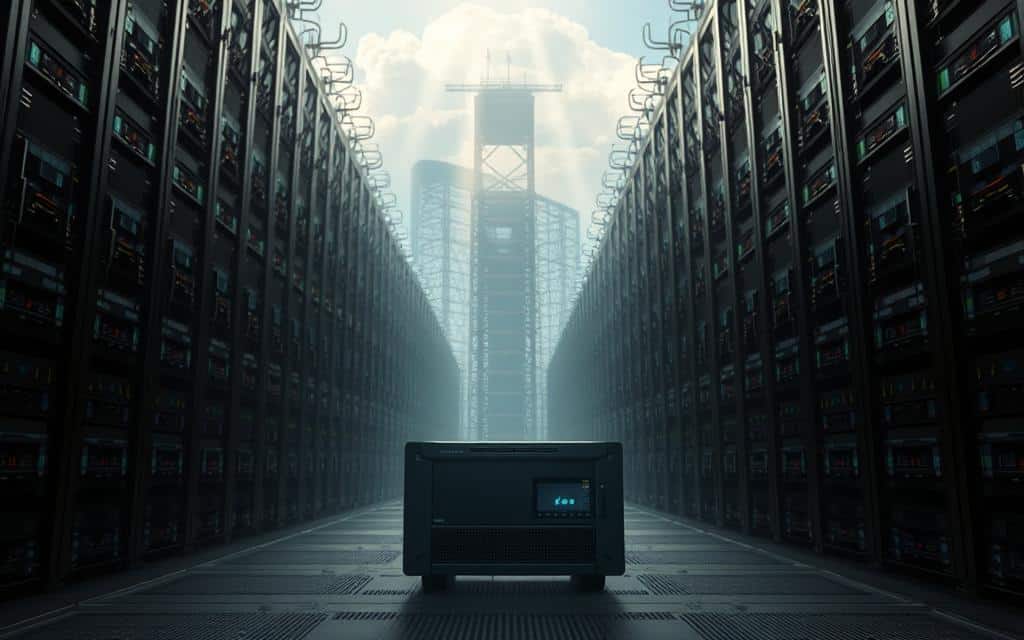Your connected devices generate mountains of information every second. By 2025, experts predict over 79 zettabytes of data will flow from smart sensors, wearables, and other internet-linked tech. That’s like filling 79 billion high-capacity hard drives!
Traditional systems weren’t built for this explosion. Slow queries, security gaps, and outdated infrastructure can cripple your operations. But smart strategies exist to turn this flood into controlled streams.
This guide reveals the biggest roadblocks—from real-time processing demands to scaling headaches—and how forward-thinking teams are solving them. You’ll discover why yesterday’s methods fail and what actually works now.
1. Security Risks: Protecting Your IoT Data from Breaches
Hackers love easy targets, and your smart devices might be serving data on a silver platter. A shocking 16% of breaches happen because no one changed default passwords like “admin/admin.” Even scarier? 63% of medical devices have unpatched flaws, risking everything from patient records to insulin pump safety.
Why Encryption Alone Isn’t Enough
Think encryption is a magic shield? Hardcoded keys in industrial sensors prove otherwise. Hackers can steal data even if it’s scrambled—unless you manage keys properly. GDPR fines hit €20 million for leaked health data, so half-measures won’t cut it.
Fix it fast:
- Rotate keys automatically—no human forgetfulness.
- Adopt zero-trust rules: verify every access request, even from “trusted” networks.
The Default Password Trap (and How to Avoid It)
That factory-set password on your smart camera? It’s a welcome mat for intruders. Hospitals learned this the hard way when unsecured devices caused HIPAA violations.
Lock it down:
- Force password changes on first login—no exceptions.
- Use automated tools to patch flaws before hackers find them.
- Check compliance standards to avoid legal nightmares.
2. Data Volume Overload: Handling the IoT Tsunami
Factories alone spit out 5TB of data hourly. Can your infrastructure handle that? By 2025, global devices will generate 79.4 zettabytes—equivalent to streaming HD video nonstop for 1 billion years. Traditional tools buckle under this flood of unstructured data.

79.4 Zettabytes by 2025: Can Your Storage Keep Up?
Cloud systems struggle with sheer volume. Autonomous vehicles need responses under 10 milliseconds—too fast for distant servers. Sending raw data also burns network bandwidth. Offshore wind farms, for example, pay hefty cellular fees just to transmit sensor readings.
Edge Computing vs. Cloud: Balancing the Load
Walmart slashed costs 40% by processing shelf sensor data locally. Edge computing filters noise before sending insights to the cloud. Here’s when to choose each:
- Edge: Low latency needs (factory robots, medical devices).
- Cloud: Long-term analysis (trend reports, backups).
Smart factories now blend both. Critical alerts trigger edge actions, while the cloud handles historical patterns.
3. Real-Time Processing: When Speed Is Non-Negotiable
Every millisecond counts when lives or millions in assets are on the line. A 0.5-second delay in oil pipeline sensors can trigger $500k+ spills. Cardiac monitors demand responses under 100ms—slower than a blink. Batch processing fails here, as seen when smart grids crash during peak demand.
Latency Woes in Critical Applications
Not all delays are equal. A laggy video call annoys; a slow sensor kills. Tesla’s fleet uses Apache Kafka to process 1M messages/sec—anything less risks collisions. Here’s how industries compare:
| Application | Max Tolerable Latency | Consequence of Failure |
|---|---|---|
| Cardiac monitors | <100ms | Patient death |
| Autonomous vehicles | 10ms | Accidents |
| Smart grids | 50ms | Blackouts |
Streaming Analytics to the Rescue
Batch systems analyze yesterday’s data. Streaming tools act now. Manufacturers cut downtime 30% by spotting equipment vibrations in real time. Avoid “fake real-time” traps—5-minute refreshes won’t stop a gas leak.
Make it work:
- Use edge computing for life-or-death apps (e.g., defibrillators).
- Test systems under load—peak traffic exposes flaws.
- Audit vendors: Ask for latency guarantees in writing.
4. Scalability: The Hidden IoT Database Storage Challenge
What works for 100 devices often crumbles at 10,000—scaling isn’t optional in smart systems. 80% of projects fail when crossing the 10k-device mark, often due to outdated architectures. FirstPoint’s auto-scaling slashed costs by 60% for networks with 10M+ devices, proving smart growth pays off.

Growing Pains: From Hundreds to Millions of Devices
Time-series databases like InfluxDB handle sensor streams better than traditional SQL at scale. A single oil rig’s sensors can generate 500GB daily—SQL queries slow to a crawl with this volume.
Vendor lock-in worsens the problem. AWS IoT Core charges $8 per million messages after free tiers, while Azure’s tiered pricing surprises many with hidden bandwidth fees. Always model 5-year costs before committing.
Auto-Scaling Solutions That Won’t Break the Bank
Hybrid solutions blend edge and cloud smartly. Maersk tracks 400K shipping containers globally using local nodes for real-time alerts and cloud backups for analytics. Their system scales seamlessly during peak seasons.
Try this cost estimator:
- Current devices × 5 (projected growth)
- Data volume per device (GB/month)
- Cloud vendor’s per-GB storage cost
Example: 10K devices → 50K devices × 2GB = $15K/month on AWS vs. $6K with auto-scaling.
5. Legacy Systems: The Silent IoT Roadblock
Your factory’s 20-year-old control system wasn’t designed for today’s smart sensors. 73% of manufacturers report their PLCs can’t communicate with modern platforms. This creates dangerous gaps—like a food plant’s SCADA system ignoring real-time temperature alerts until spoiled batches shipped.
Why Batch Processing Falls Short
Older systems work in daily or hourly cycles. Smart sensors need instant responses. A 1990s bottling line might miss 200 faulty caps per minute while waiting for its nightly report.
| Approach | Speed | Cost | Best For |
|---|---|---|---|
| Full replacement | Fastest | $250k+ | Safety-critical systems |
| Middleware bridge | Near real-time | $50k/year | Budget-conscious upgrades |
| API gateway | 5-10 sec delay | $20k setup | Non-urgent data |
Modernizing Without the Headache
John Deere transformed 1980s harvesters into smart farms by adding MQTT translators. These $8,000 devices send equipment data to cloud analytics without replacing entire systems.
Try these steps first:
- Identify which legacy components actually need replacing
- Test middleware options with your oldest equipment
- Phase changes over 6-12 months to avoid downtime
5 Signs Your System Will Fail:
- Alerts arrive after damage occurs
- You can’t add new sensor types
- Vendor no longer supports the software
- Data exports take longer than 15 minutes
- IT avoids touching the “ancient” system
6. Moving Forward with Smarter IoT Data Management
Smart solutions turn data chaos into clear insights. Tools like FirstEigen’s DataBuck automate 90% of quality checks, freeing teams to focus on action. The right platforms make all the difference—Siemens MindSphere excels for industrial systems, while FirstPoint locks down security gaps.
Integration-Platform-as-a-Service (IPaaS) simplifies scaling. It connects legacy systems with modern analytics, avoiding costly rebuilds. Companies ignoring these upgrades face 3.5x higher breach costs, per recent studies.
Future-proof your strategy today. Start your audit with our free 10-point checklist—because smart data management starts with a plan.